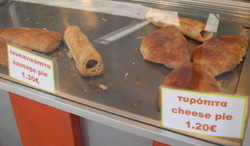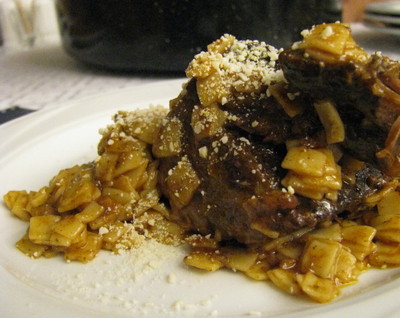Flavours of Fieldwork Secret Kitchen series
Leave a CommentAnna is hosting a series of dinners based on anthropology PhD students’ research in Morocco, Japan, China and Greece. Each dinner will bring to life recipes and stories from fieldwork in home kitchens, restaurants, shops and archives, reveal some surprising insights into cuisines you thought you knew, and demonstrate ways in which research into food contributes so much to anthropology today. Expect welcome drinks, feasting at communal tables and a delicious night out!
 A Moroccan Feast
A Moroccan Feast
Fri 21st & Sat 22nd October 2016,
with Katharina Graf
 Regional Japanese Cooking
Regional Japanese Cooking
Fri 9th & Sat 10th December 2016
with Celia Plender
Regional food in Japan reveals a rich variety of cooking styles, tastes and ingredients. While some of these are seen as deeply embedded in the history and cultural practices of an area, others are identified as recently invented ‘traditions’. Both give insights into the social construction of local food and national cuisine. A decade ago Celia worked in a Tokyo restaurant and has since then regularly cooked and written about Japanese food. This dinner follows a recent trip to research regional Japanese cooking.
 Cantonese Masala
Cantonese Masala
Fri 17th & Sat 18th February 2017
with Mukta Das
Take a journey into the kitchens and cafes of 19th century Canton as we explore how experiments with spices have resulted in dishes that are now part of Macanese, Hong Kong or Cantonese culinary heritage. Mukta recently spent a year in Hong Kong, Macau and Guangzhou with professional chefs and home cooks, and in the archives, uncovering some of the ways the centuries old maritime spice trade carved deep and aromatic channels into the everyday cooking in these old cities.
A Greek Moveable Feast
Fri 17th & Sat 18th March 2017
with Nafsika Papacharalampous
Nafsika undertook fieldwork in the delis and restaurant kitchens of Athens, following the journey of Greek peasant foods of the past (such as trahanas or beef tongue) into the urban present. She is now writing up her PhD on Greek poverty and artisan foods and their relationship to national identity, tradition, heritage and memory. She is also an experienced professional cook, with a passion for old Greek cookery books.
To book your place:
All events start at 7.30pm and cost £45. To book your place email Anna by clicking the ‘book now’ button below with the following: which dinner(s) you would like to attend, the number of people in your group, whether you prefer the Friday or Saturday or could do either, and whether anyone in your group has any special dietary requirements.
| Event: | Flavours of Fieldwork Secret Kitchen series |
| Date(s): | October 2016 to March 2017 |
| Time: | 7.30pm - 11pm |
| Location: | London N5 (Arsenal tube 2 mins walk) |
| Price: | £45 |
| Book now | |
| Please read the booking terms & conditions before booking your place. Thank you. |







